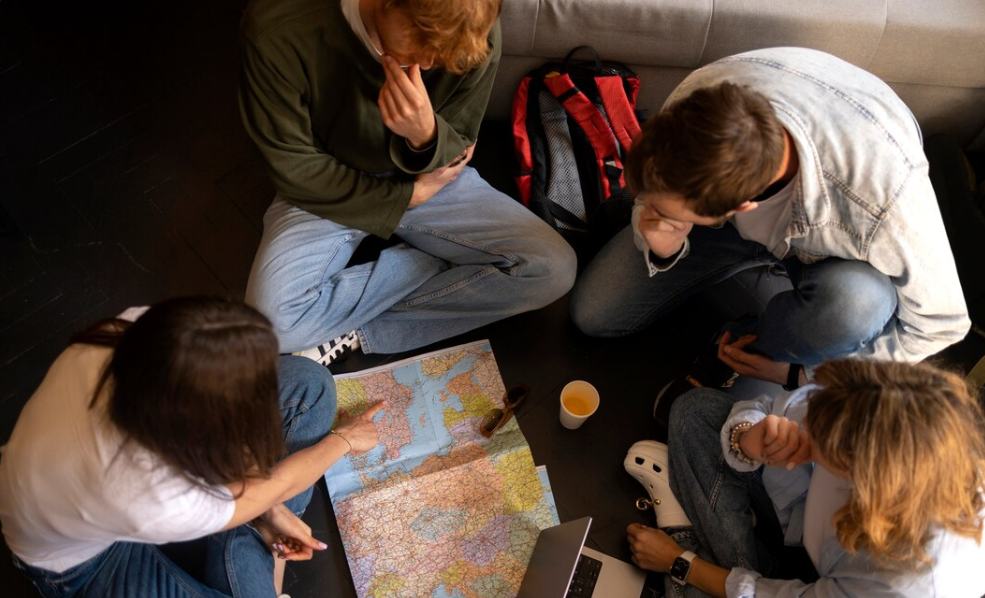
by Dulce Navarro | May 8, 2025 | Uncategorized
10 Essential Tips for Moving to Spain Smoothly and Stress-Free
Relocating to a new country can be both exciting and overwhelming. Spain, with its vibrant culture, favorable climate, and high quality of life, is an increasingly popular destination for expats. If you’re planning a move to Spain, preparation is key. Here are ten essential tips to ensure a smooth and stress-free relocation.
1. Understand Visa and Residency Requirements
Before moving, make sure you are fully aware of the visa and residency requirements for your nationality. EU citizens have fewer hurdles, but non-EU citizens often require a visa to reside in Spain long-term. Consider options such as the Non-Lucrative Visa or the Golden Visa, depending on your situation.
2. Choose the Right City or Region
Spain is incredibly diverse, with each region offering different lifestyles. Cities like Madrid and Barcelona offer urban convenience and job opportunities, while Valencia and Seville are known for a more relaxed pace and lower cost of living. Do your research to find the place that best suits your lifestyle and goals.
3. Learn Basic Spanish
While many Spaniards speak English, especially in tourist areas, learning basic Spanish will greatly enhance your experience. It will help you navigate daily life, integrate into the community, and handle administrative tasks more efficiently.
4. Open a Spanish Bank Account
Having a local bank account makes it easier to pay rent, utilities, and other expenses. Most banks will require a valid ID, proof of address, and your NIE (Número de Identificación de Extranjero). Choose a bank with good digital services for convenience.
5. Obtain Your NIE Number
The NIE is a tax identification number required for most official transactions in Spain, including signing a lease, opening a bank account, and setting up utilities. Apply for your NIE as early as possible through the local police station or a Spanish consulate.
6. Find Suitable Accommodation
Depending on your preferences and budget, you can rent an apartment, a shared flat, or even a rural home. Use reputable property websites and consider hiring a local agent to help with paperwork and negotiations. Always read contracts carefully before signing.
7. Secure Health Insurance
Spain offers excellent public healthcare, but access depends on your residency status. If you’re not eligible for the public system initially, you’ll need private health insurance. Compare providers to find the best coverage for your needs.
8. Understand the Cost of Living
Spain is generally more affordable than many other Western European countries, but costs vary widely by region. Be prepared for expenses such as rent, utilities, groceries, and transportation. A clear budget will help you adjust more comfortably.
9. Familiarize Yourself with Local Culture and Etiquette
Spaniards value community, food, and tradition. Expect late meal times, extended social gatherings, and a relaxed approach to punctuality. Understanding local customs will help you integrate and avoid misunderstandings.
10. Plan Your Tax and Financial Affairs
If you’ll be earning income or holding assets in multiple countries, consider consulting a tax advisor. Spain’s tax regulations can be complex, and professional advice will ensure compliance and optimize your financial planning.
Conclusion
Moving to Spain is a thrilling adventure that can enrich your personal and professional life. With the right preparation and mindset, you can transition smoothly and make the most of what this beautiful country has to offer.
Stay Connected for More Travel and Lifestyle Inspiration. For more insights into travel, culture, and lifestyle tips, follow me on Instagram @salvadorordorica. If you’re seeking professional translation and localization services to enhance your global ventures, visit The Spanish Group — your trusted partner in bridging cultures worldwide.

by Dulce Navarro | May 1, 2025 | Uncategorized
Your Ultimate French Riviera Travel Guide: From Nice to Saint-Tropez
The French Riviera, or Côte d’Azur, is a sun-drenched stretch of Mediterranean coastline renowned for its azure waters, glamorous resorts, and charming villages. Spanning from Nice to Saint-Tropez, this region offers a blend of cultural richness, natural beauty, and luxurious experiences. Whether you’re seeking vibrant city life, serene beaches, or picturesque hilltop towns, this guide will help you plan an unforgettable journey along the French Riviera.
Starting Point: Nice – The Heart of the Riviera
Begin your adventure in Nice, a city that perfectly encapsulates the essence of the French Riviera. Stroll along the iconic Promenade des Anglais, explore the vibrant Old Town (Vieux Nice) with its narrow streets and colorful markets, and visit the Musée Matisse to appreciate the works of the famed artist who once called Nice home. Don’t miss the panoramic views from Castle Hill (Colline du Château), offering a breathtaking vista of the city and the Baie des Anges.
Antibes – A Blend of History and Luxury
Heading southwest, Antibes is a must-visit destination known for its historic charm and luxurious appeal. Wander through the cobbled streets of the Old Town, visit the Picasso Museum housed in the Château Grimaldi, and marvel at the superyachts in Port Vauban, one of the largest marinas in Europe. The nearby Cap d’Antibes offers scenic coastal walks and secluded beaches.
Cannes – Glamour and Culture
Famous for the Cannes Film Festival, this city exudes glamour and sophistication. Walk the Boulevard de la Croisette, lined with upscale boutiques and hotels, and relax on the sandy beaches. Explore Le Suquet, the old quarter, for a taste of Cannes’ history and enjoy panoramic views from the hilltop. Art enthusiasts can visit the Centre d’art La Malmaison, showcasing contemporary works.
Scenic Drives and Hidden Gems
Between Cannes and Saint-Tropez, the coastal road offers stunning views and charming stops. Consider visiting the Esterel Massif, known for its red volcanic rock formations and scenic hiking trails. The towns of Théoule-sur-Mer and Saint-Raphaël provide picturesque settings and tranquil beaches, perfect for a leisurely break.
Saint-Tropez – The Quintessential Riviera Experience
Once a quaint fishing village, Saint-Tropez has transformed into a symbol of Riviera glamour. Explore the historic La Ponche district, visit the Citadel for panoramic views, and indulge in shopping at high-end boutiques. The town’s beaches, such as Pampelonne, offer both lively beach clubs and serene spots for relaxation. For art lovers, the Musée de l’Annonciade houses an impressive collection of modern art.
Travel Tips and Recommendations
- Best Time to Visit: Late spring (May-June) and early autumn (September) offer pleasant weather and fewer crowds.
- Transportation: Renting a car provides flexibility to explore at your own pace. Alternatively, trains and ferries connect major towns along the coast.
- Accommodation: From luxury resorts to charming bed and breakfasts, the Riviera offers a range of lodging options to suit every preference.
- Cuisine: Savor local specialties such as bouillabaisse, ratatouille, and fresh seafood, accompanied by regional wines.
Conclusion
Traversing the French Riviera from Nice to Saint-Tropez offers a journey through diverse landscapes, rich history, and unparalleled elegance. Each destination along the coast presents its unique charm, ensuring a travel experience that combines relaxation, culture, and adventure.
Stay Connected for More Travel and Lifestyle Inspiration. For more insights into travel, culture, and lifestyle tips, follow me on Instagram @salvadorordorica. If you’re seeking professional translation and localization services to enhance your global ventures, visit The Spanish Group — your trusted partner in bridging cultures worldwide.

by Dulce Navarro | Apr 24, 2025 | Uncategorized
The Role of Language Preservation in Protecting Global Heritage
Language is more than a tool for communication—it is a vessel of culture, history, and identity. Across the globe, thousands of languages are spoken, each carrying the unique essence of its people. However, with increasing globalization and the dominance of widely spoken languages, many lesser-known languages are at risk of disappearing. Preserving these languages is not just about saving words—it’s about protecting global heritage and maintaining the rich diversity that defines humanity.
Understanding the Cultural Significance of Language
Languages reflect how communities interpret the world around them. They carry folklore, rituals, social values, and collective memories that have been passed down for generations. When a language dies, it takes with it an irreplaceable part of the world’s cultural mosaic. The preservation of these languages ensures that we retain access to indigenous knowledge, traditional practices, and diverse worldviews that enrich the global narrative.
Languages at Risk
According to UNESCO, nearly 40% of the world’s 7,000 languages are endangered. Many of these are spoken by small, indigenous communities, and some have fewer than 1,000 speakers left. Urban migration, intergenerational language gaps, and a lack of formal education in native tongues contribute significantly to their decline. When younger generations adopt dominant languages for socioeconomic reasons, their ancestral languages often fade away.
Why Preservation Matters
The loss of language is a loss of cultural heritage, identity, and wisdom. Language preservation helps:
- Maintain cultural diversity and uniqueness
- Protect the rights of indigenous peoples
- Retain traditional knowledge systems, especially in areas such as medicine, agriculture, and ecology
- Promote inclusive education and social cohesion
The Role of Technology in Language Preservation
Modern technology has become a powerful ally in the fight to save endangered languages. Digital dictionaries, mobile apps, audio recordings, and online learning platforms help communities document and teach their native tongues. Platforms like YouTube, social media, and podcasting allow native speakers to share stories and educational content with a global audience. AI-driven translation tools are also playing a growing role in accessibility and revitalization efforts.
Community Involvement and Education
Language preservation efforts must begin within communities. Educational programs in native languages, storytelling events, and cultural workshops encourage younger generations to learn and use their ancestral tongues. Community-led initiatives ensure that language is not only documented but also lived and celebrated. Schools that offer bilingual education help bridge the gap between cultural identity and modern needs.
Policy and Institutional Support
Governments and international institutions have a critical role to play in preserving linguistic diversity. Legislation recognizing linguistic rights, funding for language documentation projects, and integrating native languages into school curriculums can significantly influence preservation outcomes. UNESCO’s International Decade of Indigenous Languages (2022–2032) aims to raise global awareness and foster commitment from policymakers, researchers, and citizens alike.
Corporate Responsibility in Language Preservation
Companies operating on a global scale also have a role in promoting language inclusivity. Multinational organizations can support language preservation by offering localized products and services, employing translation and localization professionals, and fostering multilingual work environments. By doing so, they not only contribute to cultural sustainability but also enhance their reach and engagement with diverse markets.
How You Can Help
Everyone can contribute to language preservation. Here’s how:
- Learn and use endangered or minority languages when possible
- Support cultural organizations and initiatives focused on language documentation
- Share content and resources that promote linguistic diversity
- Encourage schools and institutions to adopt inclusive language policies
Conclusion
Preserving languages means preserving our collective history, wisdom, and identity. It is a shared responsibility that calls for cooperation across communities, institutions, and industries. As we move forward in an increasingly interconnected world, let’s ensure that we carry with us the voices of our ancestors and the diverse narratives that shape who we are.
Stay Connected for More Travel and Lifestyle Inspiration. For more insights into travel, culture, and lifestyle tips, follow me on Instagram @salvadorordorica. If you’re seeking professional translation and localization services to enhance your global ventures, visit The Spanish Group — your trusted partner in bridging cultures worldwide.

by Dulce Navarro | Apr 11, 2025 | Uncategorized
Cultural Immersion Travel: Learning Languages on the Road
In today’s hyper-connected and globalized world, the ability to communicate across cultures is more valuable than ever. For entrepreneurs and company directors, cultural awareness and multilingual skills are not just assets — they are critical tools for expanding into new markets, building trust with international partners, and navigating the intricacies of global business.
One of the most enriching and efficient ways to learn a language is through cultural immersion. Travel offers a unique opportunity to not only explore new places but also absorb languages in their native context, gaining practical, real-world fluency far beyond the capabilities of any classroom or textbook.
Why Cultural Immersion is the Best Language Teacher
Traditional language education often falls short when it comes to spontaneous conversation, regional slang, or cultural subtleties. Immersion forces the brain to adapt quickly. When you’re surrounded by native speakers, reading signs in another language, and ordering your morning coffee in a foreign tongue, learning becomes organic and intuitive.
Being immersed in a culture also helps reinforce your language skills through constant exposure. Listening to local radio, watching foreign films, or participating in community events sharpens both your listening and speaking abilities in ways a formal course cannot replicate.
Top Destinations for Language and Culture Immersion
- Spain: A hub for Spanish learners, cities like Madrid and Barcelona offer countless opportunities to interact with native speakers while experiencing vibrant local traditions.
- France: From Paris to Provence, France provides a perfect backdrop for learners of French, offering language schools, cultural centers, and immersive experiences like homestays or cooking classes.
- Japan: For those intrigued by the Japanese language and culture, Tokyo and Kyoto offer structured programs along with full cultural exposure, from etiquette to cuisine.
- Mexico: A warm and welcoming environment, Mexico is an excellent place to learn Spanish while diving into rich historical and culinary traditions.
Tips for Learning Languages While Traveling
1. Stay with Locals
Platforms like Airbnb, Couchsurfing, or local homestay programs allow you to live with native speakers. This daily contact fosters real conversation and cultural exchange, improving your pronunciation and vocabulary in meaningful ways.
2. Enroll in Local Language Classes
Many destinations offer short-term intensive language courses tailored for travelers. These classes often include cultural excursions that further deepen your understanding of the local lifestyle and language usage.
3. Practice Daily with Locals
Don’t be afraid to make mistakes. Start conversations in cafés, markets, or public transport. Locals generally appreciate the effort and will often help you learn with patience and encouragement.
4. Use Language Apps in Real Situations
Apps like Duolingo, Babbel, or HelloTalk are great, but they work even better when used to reinforce what you hear and see around you. Try translating real signs, menus, or even social media posts from locals.
5. Keep a Language Journal
Write daily entries using new vocabulary or expressions you picked up during your travels. This not only solidifies your memory but also shows your progress over time.
Language as a Business Strategy
For business leaders, cultural immersion is more than personal growth — it’s strategic. Learning a language while traveling helps develop cultural empathy and business intuition. Being able to negotiate, network, and lead in a foreign language is an unmatched advantage in today’s competitive landscape.
Moreover, understanding the cultural nuances that influence communication styles, business etiquette, and decision-making processes can make or break a deal. Immersive travel experience can turn you into a more adaptable, globally-minded leader.
Challenges of Learning Languages on the Road
Of course, language learning while traveling is not without its hurdles. Cultural misunderstandings, language plateaus, and moments of frustration are normal. However, these challenges are also where the deepest learning occurs. They teach resilience, patience, and humility — all key leadership traits.
It’s important to set realistic goals. Instead of aiming for fluency in a few weeks, focus on practical communication. Being able to introduce yourself, ask for directions, or order in a restaurant already opens doors to richer experiences and genuine interactions.
Embracing the Journey
Cultural immersion through travel is one of the most transformative experiences you can pursue. It cultivates a deeper understanding of the world, fosters empathy, and enhances your global awareness — all while helping you pick up a new language in the most authentic way possible.
Whether you’re a seasoned executive or an aspiring entrepreneur, consider building language learning into your travel itinerary. The rewards extend far beyond the professional sphere, enriching your life with stories, relationships, and memories that stay with you forever.
Conclusion
Language and culture are inseparable. By immersing yourself in both while traveling, you position yourself not just as a better communicator, but as a more thoughtful global citizen. The road becomes your classroom, and the world, your teacher.
Stay Connected for More Travel and Lifestyle Inspiration. For more insights into travel, culture, and lifestyle tips, follow me on Instagram @salvadorordorica. If you’re seeking professional translation and localization services to enhance your global ventures, visit The Spanish Group — your trusted partner in bridging cultures worldwide.

by Dulce Navarro | Mar 26, 2025 | Uncategorized
Cultural Heritage Preservation: Why It Matters in a Modern World
Understanding Cultural Heritage
Cultural heritage is the legacy of physical artifacts and intangible attributes passed down from generation to generation. These include monuments, buildings, manuscripts, works of art, and traditions, customs, and practices that define a society’s identity. In today’s fast-paced, technology-driven world, the importance of preserving these elements of culture can sometimes be overlooked. However, cultural heritage plays an essential role in connecting us to our past and shaping our future.
Why Cultural Heritage Preservation Matters
1. Fostering Identity and Belonging
Preserving cultural heritage helps people feel connected to their roots. It fosters a sense of belonging and pride within communities, strengthening collective identities. In a world where globalization often blurs national and cultural lines, heritage preservation anchors individuals to their origins, reminding them of who they are and where they come from.
2. Supporting Education and Knowledge Sharing
Cultural heritage is a living classroom. Monuments, art, language, and traditions offer critical lessons about human history, migration, innovation, and creativity. Museums, heritage sites, and cultural programs educate both younger generations and international visitors, fostering cross-cultural understanding and appreciation.
3. Boosting Local Economies Through Tourism
Heritage sites and cultural festivals draw millions of tourists each year, directly contributing to local and national economies. These visits support businesses, create jobs, and fund the maintenance and restoration of historical landmarks. The preservation of cultural sites is not only about safeguarding history but also investing in long-term economic sustainability.
4. Encouraging Sustainability
Many traditional practices and designs offer sustainable solutions that modern society can learn from. Ancient agricultural methods, architectural designs suited to local climates, and traditional crafts promote responsible use of resources. Preserving and studying these practices can lead to innovative solutions for current environmental challenges.
Challenges in Preserving Cultural Heritage
Despite its importance, cultural heritage faces threats from war, climate change, urbanization, and neglect. Natural disasters and human conflicts can devastate irreplaceable monuments and artifacts. Additionally, modernization and development sometimes lead to the destruction of old neighborhoods and historical sites. Governments, private organizations, and individuals all play crucial roles in protecting cultural heritage from these threats.
The Role of Translation and Localization in Heritage Preservation
Translation services contribute significantly to the preservation and sharing of cultural heritage. By translating ancient texts, folklore, and historical documents into various languages, translators make cultural heritage accessible to a global audience. Localization ensures that cultural nuances are respected and understood, fostering deeper intercultural communication. This is where companies like The Spanish Group excel, bridging language barriers and helping cultures thrive worldwide.
How You Can Contribute to Cultural Heritage Preservation
- Visit museums and historical sites to learn about and support local heritage.
- Participate in cultural events and activities.
- Donate to heritage preservation organizations.
- Encourage conversations around the importance of heritage in your community.
- Support translation and documentation projects that preserve oral histories and ancient texts.
Conclusion
In a rapidly evolving world, the preservation of cultural heritage remains a cornerstone of identity, learning, and sustainability. It enriches our lives and keeps the stories of past generations alive for future ones to learn from. Everyone has a part to play, whether through visiting cultural sites, supporting preservation initiatives, or facilitating intercultural communication.
Stay Connected for More Travel and Lifestyle Inspiration. For more insights into travel, culture, and lifestyle tips, follow me on Instagram @salvadorordorica. If you’re seeking professional translation and localization services to enhance your global ventures, visit The Spanish Group — your trusted partner in bridging cultures worldwide.

by Dulce Navarro | Mar 25, 2025 | Uncategorized
How to Build a Social Life as an Expat in a New Country
Moving to a new country as an expat can be an exciting adventure filled with new opportunities. However, one of the most challenging aspects can be establishing a social life from scratch. Feeling connected to your community and building meaningful relationships are essential for personal happiness and successful integration. Below are key strategies to help you build a thriving social life as an expat.
1. Embrace the Local Culture
Immersing yourself in the local culture is a great first step. Attend local festivals, try traditional foods, and participate in community events. This not only helps you understand the culture better but also provides opportunities to meet locals who appreciate your effort to integrate.
2. Learn the Language
Language barriers can hinder social interactions, so investing time in learning the local language is crucial. Enroll in language classes, use language learning apps, or join conversation exchange groups. Even basic knowledge of the language can make a huge difference in daily interactions and forming friendships.
3. Join Expat Communities
Expat groups and clubs are invaluable for meeting people who understand the challenges of living abroad. Search for online forums, local meetups, and Facebook groups dedicated to expats in your area. These groups often organize events, dinners, and activities where you can meet others in similar situations.
4. Take Up New Hobbies
Joining hobby clubs or attending classes is another excellent way to meet people with similar interests. Whether it’s cooking, dancing, yoga, or photography, these activities encourage social interaction and can lead to long-lasting friendships.
5. Volunteer Your Time
Volunteering for local organizations is a fulfilling way to give back to the community and meet people who share your values. Look for charities, community centers, or international organizations where you can contribute your time and skills.
6. Network Through Work
Professional networking can also be a social gateway. Attend business events, join industry-specific associations, and take part in company social gatherings. This not only helps build your professional network but can also lead to personal friendships.
7. Be Open and Proactive
Building a social life requires effort and openness. Say yes to invitations, start conversations with neighbors, and don’t hesitate to reach out to new acquaintances for coffee or lunch. Showing genuine interest in others will help you build trust and friendships over time.
8. Stay Positive and Patient
Friendships take time to develop. Stay positive, be patient, and remain persistent in your efforts. Every small step counts, and soon you’ll find yourself surrounded by a network of friends and acquaintances.
Conclusion
Building a social life as an expat is undoubtedly challenging but incredibly rewarding. With curiosity, effort, and an open heart, you can create meaningful connections that enrich your life in your new home country.
Stay Connected for More Travel and Lifestyle Inspiration. For more insights into travel, culture, and lifestyle tips, follow me on Instagram @salvadorordorica. If you’re seeking professional translation and localization services to enhance your global ventures, visit The Spanish Group — your trusted partner in bridging cultures worldwide.






